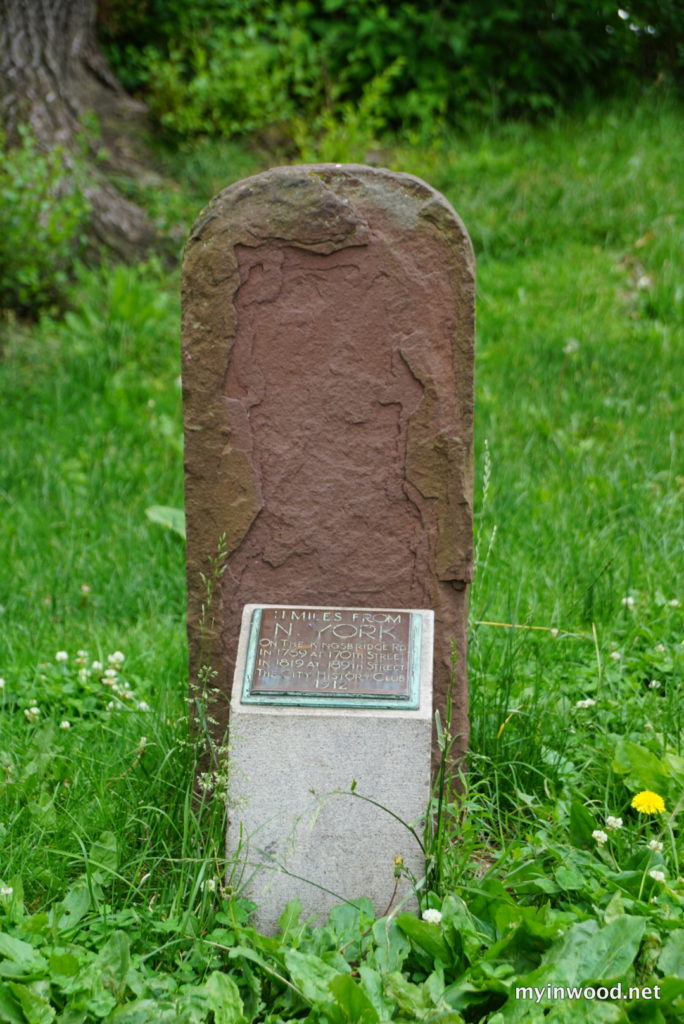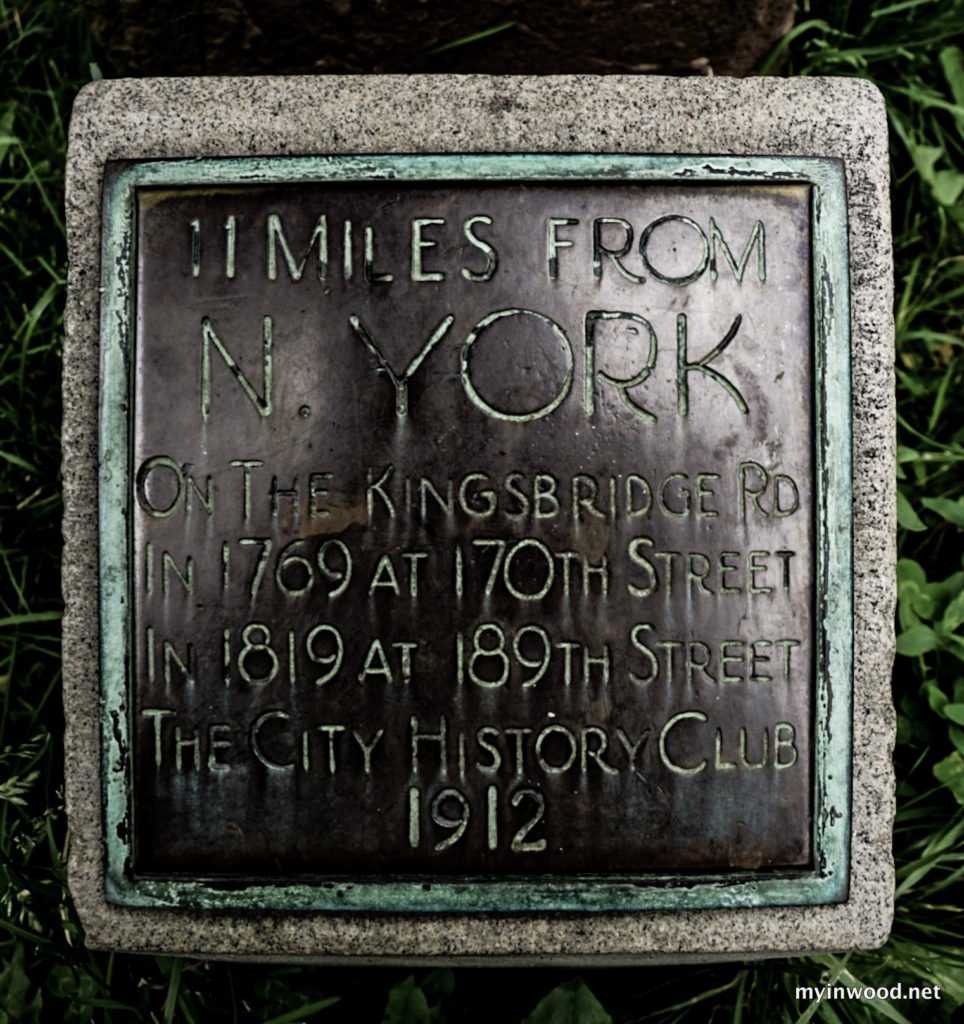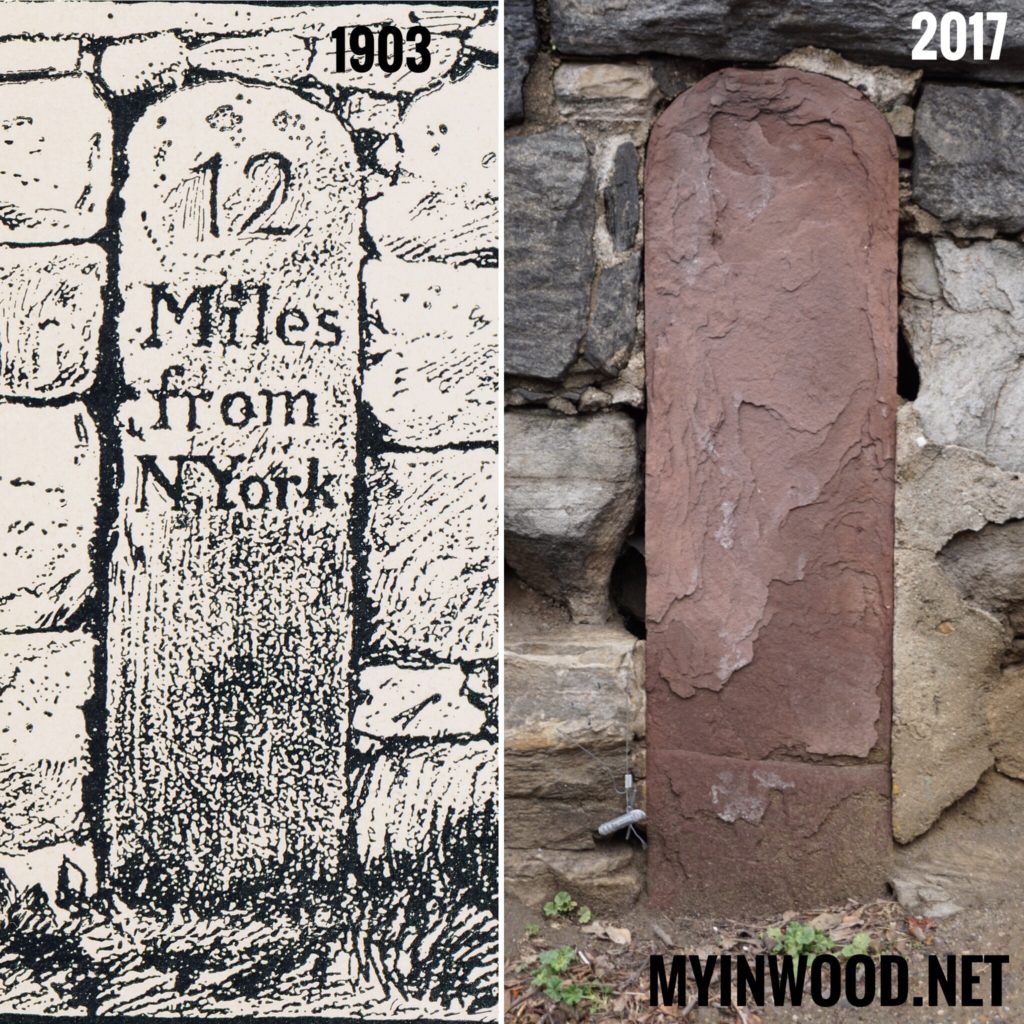
On the final day of May, in 1915, a crowd gathered under a ginkgo tree on the northern end of Manhattan. There, beside the Broadway entrance to Isham Park, local residents, politicians, Parks Department bigwigs, history buffs and lots of children assembled to honor the memory of a humble piece of brownstone—one of the few surviving mile markers from the Old Post Road.
The markers, spaced one mile apart from one another, once told travelers the distance from their present location to City Hall, located downtown.
Historian Reginald Pelham Bolton told the assemblage that this simple marker, milestone twelve, stood at 190th Street and the Kingsbridge Road (now Broadway) when the measuring system was established in 1769.
The markers remained in place—local landmarks really—until City Hall was moved from Wall Street to Broadway and Park Row in 1812.
The following year the markers were moved to new locations to compensate for the change in distance to City Hall.
Thus, in 1813, the twelfth milestone was moved from its original location at West 190th Street to West 204th Street; across the Kingsbridge Road from the Dyckman farmhouse. (Some suspect the entire series of milestones were re-cut at the time of the move).
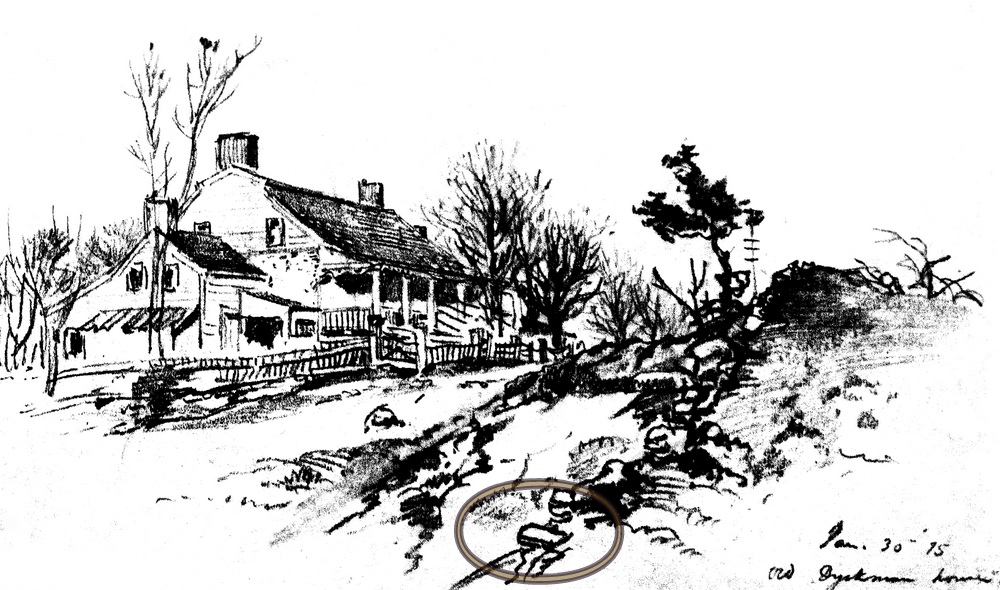
The twelfth milestone and the Dutch Colonial farmhouse would remain neighbors until the milestone system fell out of favor in the late 1800’s.
Most of the old milestones were tossed into rubbish heaps—replaced by street signs planted alongside newly graded roads.
Some did, however, treasure the old markers.
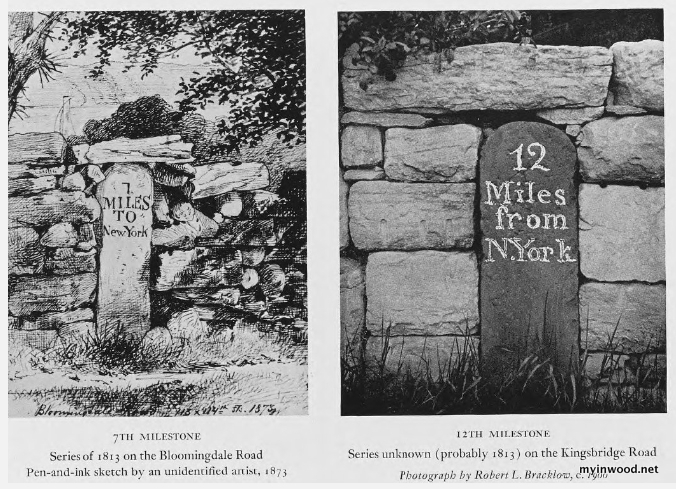
In 1913 one uptown resident wrote, “It is a shame and it amounts to a crime that in regrading the Kingsbridge Road those fine old Belleville, NJ brownstones should be cast aside by those in authority when they could simply have reset them at the curb line.” (The Sun, December 6, 1913)
“I was born on the old Kinsgbridge Road in 1833,” the Uptowner continued. “At what is now 157th Street and St. Nicholas Avenue stood the old tenth milestone. For many years I attended the old Hamilton free school on the west side of the old Kingsbridge Road and within fifty feet of the eleventh milestone, now 187th Street. The teacher’s name was Roof; in after years he was principal of the old Grove Street and other city schools. A grand old man. He would not allow us boys to deface or mar those stones in any manner.”
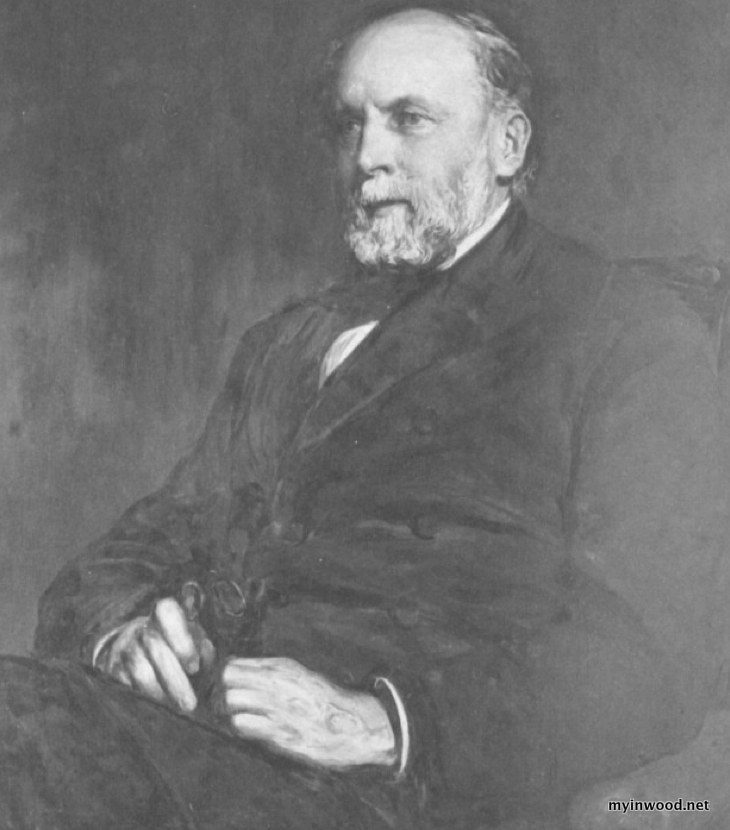
Historical Society.
William Bradley Isham, whose family donated the park to the city, also felt the milestone was a significant historic relic.
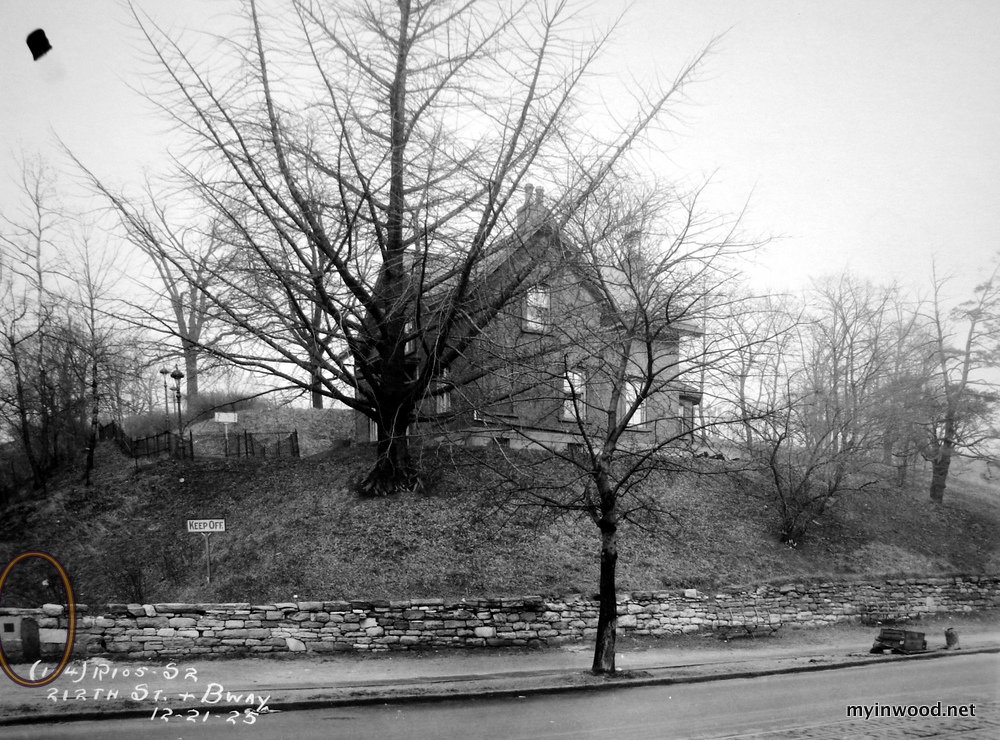
So much so that he rescued the fallen marker and embedded it in his retaining wall so it would not be carted away by vandals.
In 1912, the same year Isham Park was dedicated, Park Commissioner Charles B. Stover announced plans to have the milestone removed from the wall and placed in a “suitable spot” within the park.
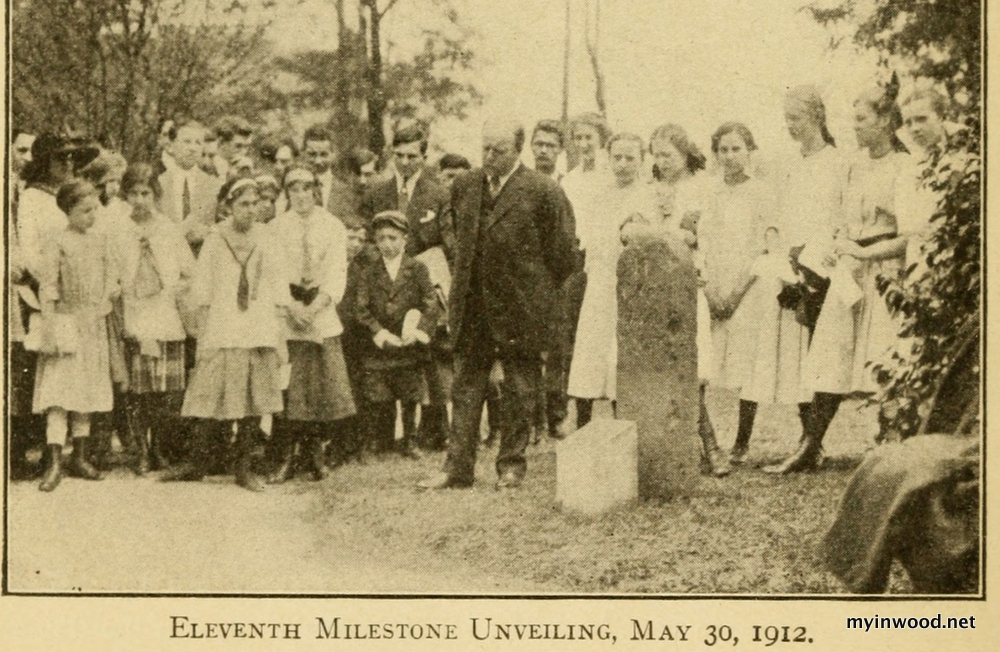
“The Commissioner pointed out the fact that the value of these old landmarks to those of the present day was not the practical use for which they were intended, but the suggestive one that citizens were better because of their interest in history.” (Documents of the Assembly of the State of New York, 1913)
Ultimately, the twelve-mile marker would remain embedded in the retaining wall.
But no longer would the milestone go unnoticed.
On that final day of May in 1915 the City History Club of New York presented New Yorkers with a bronze tablet, designed by historian Reginald Bolton, which read:
“12 MILES
FROM
N. YORK
ON THE KINGSBRIDGE ROAD
1769.
PRESERVED BY WILLIAM B. ISHAM.
PLACED HERE, 1912, BY
THE CITY HISTORY CLUB.”
Upon accepting the tablet on behalf the of the city, Borough President Marcus Marks thanked the members of the City History Club for erecting something “which stands for the living and not for the dead.” (Evening Post, May 31, 1915)
Other speakers included Senator George W. Simpson and Benjamin Oringer of the De Witt Clinton Club who recited the poem “The Twelfth Milestone” by Theodosia Garrison
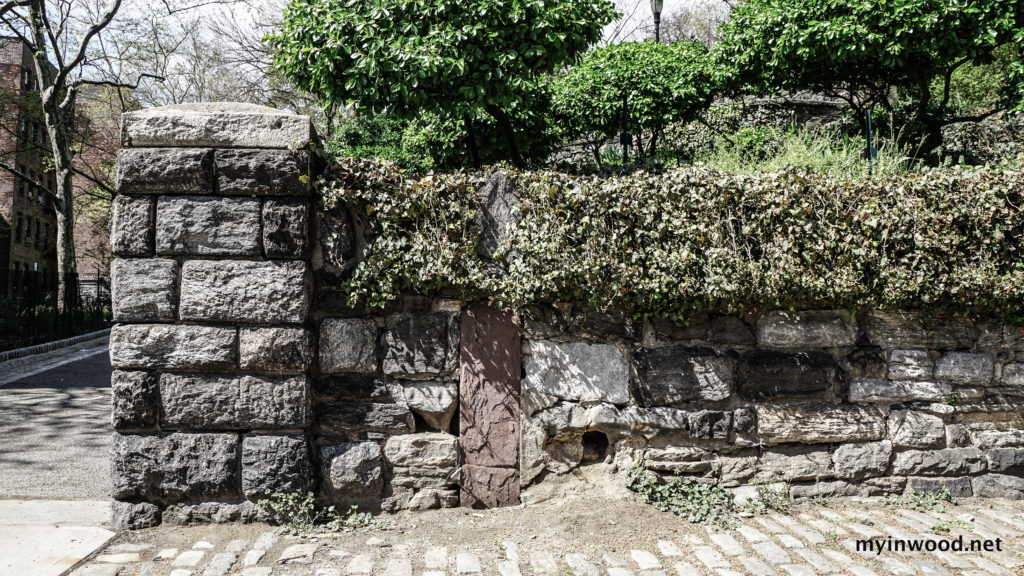 Today the twelfth milestone remains embedded in the retaining wall below the Ginkgo tree in Isham Park.
Today the twelfth milestone remains embedded in the retaining wall below the Ginkgo tree in Isham Park.
The tablet marking the significance of the location disappeared long ago.
Although, fabricating a new one could be easily accomplished using an image of another surviving tablet as a template.
